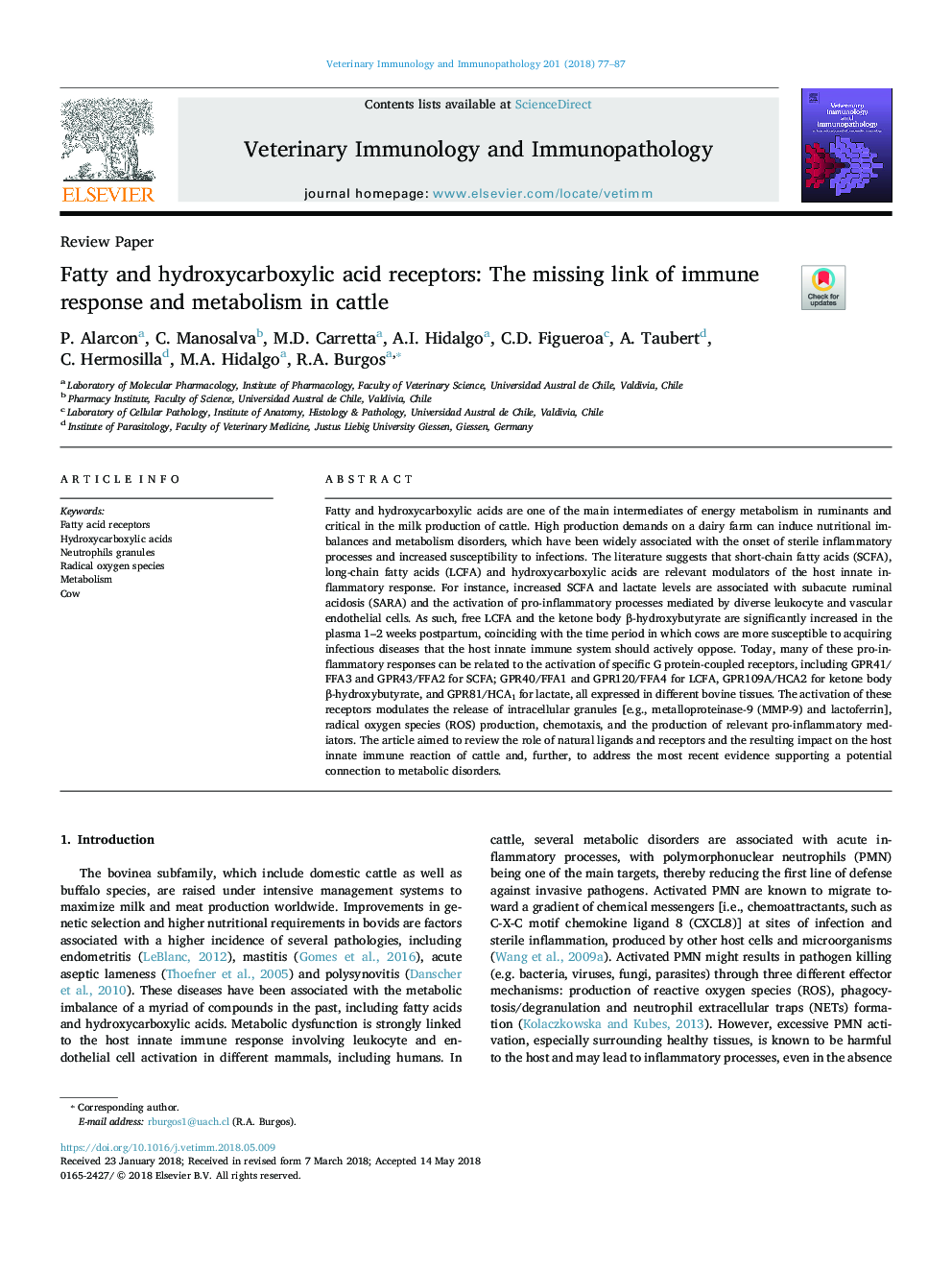| کد مقاله | کد نشریه | سال انتشار | مقاله انگلیسی | نسخه تمام متن |
|---|---|---|---|---|
| 8504692 | 1554984 | 2018 | 11 صفحه PDF | دانلود رایگان |
عنوان انگلیسی مقاله ISI
Fatty and hydroxycarboxylic acid receptors: The missing link of immune response and metabolism in cattle
ترجمه فارسی عنوان
گیرنده های چربی و هیدروکسی کربوکسیلیک اسید: پیوند از دست رفته از پاسخ ایمنی و متابولیسم در گاو
دانلود مقاله + سفارش ترجمه
دانلود مقاله ISI انگلیسی
رایگان برای ایرانیان
کلمات کلیدی
گیرنده های اسید چرب، اسیدهای هیدروکسی اوره گرانولهای نوتروفیل، گونه های اکسیژن رادیکال، متابولیسم، گاو،
موضوعات مرتبط
علوم زیستی و بیوفناوری
علوم کشاورزی و بیولوژیک
علوم دامی و جانورشناسی
چکیده انگلیسی
Fatty and hydroxycarboxylic acids are one of the main intermediates of energy metabolism in ruminants and critical in the milk production of cattle. High production demands on a dairy farm can induce nutritional imbalances and metabolism disorders, which have been widely associated with the onset of sterile inflammatory processes and increased susceptibility to infections. The literature suggests that short-chain fatty acids (SCFA), long-chain fatty acids (LCFA) and hydroxycarboxylic acids are relevant modulators of the host innate inflammatory response. For instance, increased SCFA and lactate levels are associated with subacute ruminal acidosis (SARA) and the activation of pro-inflammatory processes mediated by diverse leukocyte and vascular endothelial cells. As such, free LCFA and the ketone body β-hydroxybutyrate are significantly increased in the plasma 1-2 weeks postpartum, coinciding with the time period in which cows are more susceptible to acquiring infectious diseases that the host innate immune system should actively oppose. Today, many of these pro-inflammatory responses can be related to the activation of specific G protein-coupled receptors, including GPR41/FFA3 and GPR43/FFA2 for SCFA; GPR40/FFA1 and GPR120/FFA4 for LCFA, GPR109A/HCA2 for ketone body β-hydroxybutyrate, and GPR81/HCA1 for lactate, all expressed in different bovine tissues. The activation of these receptors modulates the release of intracellular granules [e.g., metalloproteinase-9 (MMP-9) and lactoferrin], radical oxygen species (ROS) production, chemotaxis, and the production of relevant pro-inflammatory mediators. The article aimed to review the role of natural ligands and receptors and the resulting impact on the host innate immune reaction of cattle and, further, to address the most recent evidence supporting a potential connection to metabolic disorders.
ناشر
Database: Elsevier - ScienceDirect (ساینس دایرکت)
Journal: Veterinary Immunology and Immunopathology - Volume 201, July 2018, Pages 77-87
Journal: Veterinary Immunology and Immunopathology - Volume 201, July 2018, Pages 77-87
نویسندگان
P. Alarcon, C. Manosalva, M.D. Carretta, A.I. Hidalgo, C.D. Figueroa, A. Taubert, C. Hermosilla, M.A. Hidalgo, R.A. Burgos,
